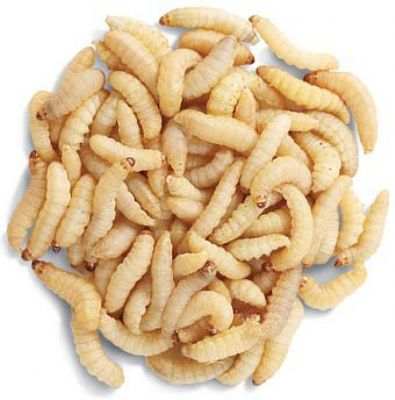The lowly, much
maligned worm may be elevated to the role of hero. Foolish humans - who
have invented their way to a self-harming existence with environmentally
degrading, unhealthy and unsustainable products
- are desperately looking for a
way to clean up plastics. Wax worms may
be the answer, presenting a new market opportunity for forward thinking entrepreneurs.
Polyethylene
made from fossil fuels has been widely used for plastic bottles and shopping
bags, among other products. Unfortunately,
the resilience and strength of polyethylene and its sister polypropylene that
make them attractive for containers also make these plastics a threat. Plastic does decompose, but at a slow rate
and all the while releasing toxic chemicals.
Just two examples are bisphenol A, which interferes in the reproductive
systems of animals, and styrene monomer, a carcinogen.
Only about 60%
to 65% of plastics are recycled or channeled to energy production. Some end up in landfills and the rest becomes
trash in the open. Discarded bottles and
bags are now choking our fresh waterways and causing a toxic morass in the
ocean - places humans count on for fish to eat and
water to drink.
In February
2017, three scientists published a paper entitled “Polyethylene Bio-degradation by Caterpillars of the Wax Moth”
in the Journal of Current Biology. The
article describes the unexpected results from placing caterpillar larva of the
wax moth on polyethylene. Polyethylene
is a string of complex and tightly connected carbon atoms that are resistant to
dissolution. Slow biodegradation had
previously been observed after nitric acid treatment and incubation with a
liquid culture of fungus. Additionally, bacterial degradation of polyethylene occurred
after several weeks of exposure to microorganisms in the gut of Indian meal moth
larvae. However, the three researchers
achieved far more interesting results.
The three
scientists reported holes beginning to appear in a polyethylene film with 40
minutes of exposure to wax worms.
Eventually 100 worms left to work on a polyethylene shopping bag for
twelve hours were successful in reducing the plastic mass by 92 milligrams. That is fast work for little worms!
To determine if
the worms were just chewing up the plastic or actually creating a chemical
reaction, a ‘worm homogenate’ was smeared on polyethylene film and compared to
an untreated film. The worm treated
plastic was reduced by 13% compared to no change for the control polyethylene
film. Additional tests were performed to
Atomic Force Microscopy that indicated the physical contact of the wax worm
homogenate with the plastic surface indeed changed the integrity of the
polymer.
There is still
considerable work to be done to determine how the wax worms succeed in breaking
down plastic. One hypothesis begins with
bees. Wax worms apparently like a good
nosh of beeswax and are found in bee hives where the moths lay their eggs. Beeswax is a diverse mixture of lipid
compounds such as alkanes, alkenes, fatty acids and esters. These words should be familiar to investors
in petroleum-based chemicals and bio-chemicals alike. The most frequent chemical bond is beeswax is
likely a carbon and hydrogen molecule with another carbon and hydrogen molecule,
i.e. CH2 to CH2. When the wax worms
digest the beeswax they break up the carbon bonds. The verdict is still out on whether the
chemical break up is due to the worm itself or to enzymes in its intestinal
tract.
It is also not
clear whether the wax worm could be the foundation for a successful
business. As the algae industry quickly
learned, a few happy algae in a small container were content to deliver large
amounts of oil for use as renewable fuel.
These otherwise simple creatures seemed to hold great promise for
renewable fuel production. However, when
scaled to commercial level the algae become persnickety, refusing to cooperate
in ‘the big pool’ and delivering disappointing oil production results. Both Shell and ExxonMobile abandoned their
respective algal-based biofuel projects.
Other developers turned to specialty chemicals and nutritional
supplements using algal proteins and carbohydrates.
Wax worms are
readily available in large and small quantities at nominal prices - 1,000
worms sell for $43.49 on Amazon.com. Unfortunately
wax worms could be just as difficult to handle as algae. The challenge is there for any and all takers.
Neither the author of the Small Cap Strategist web
log, Crystal Equity Research nor its affiliates have a beneficial interest in
the companies mentioned herein.

No comments:
Post a Comment